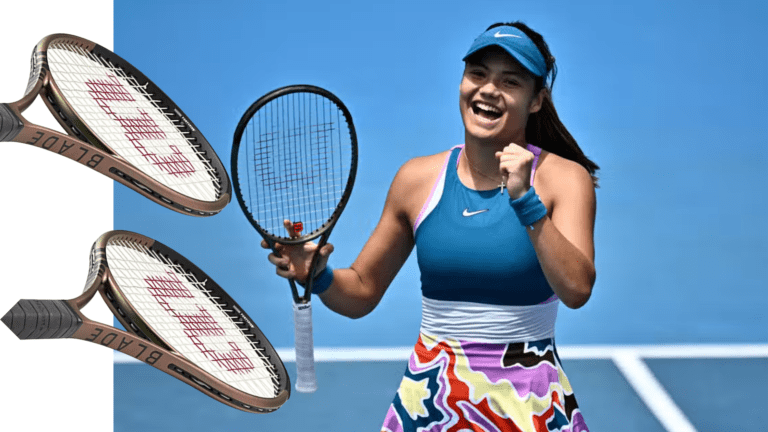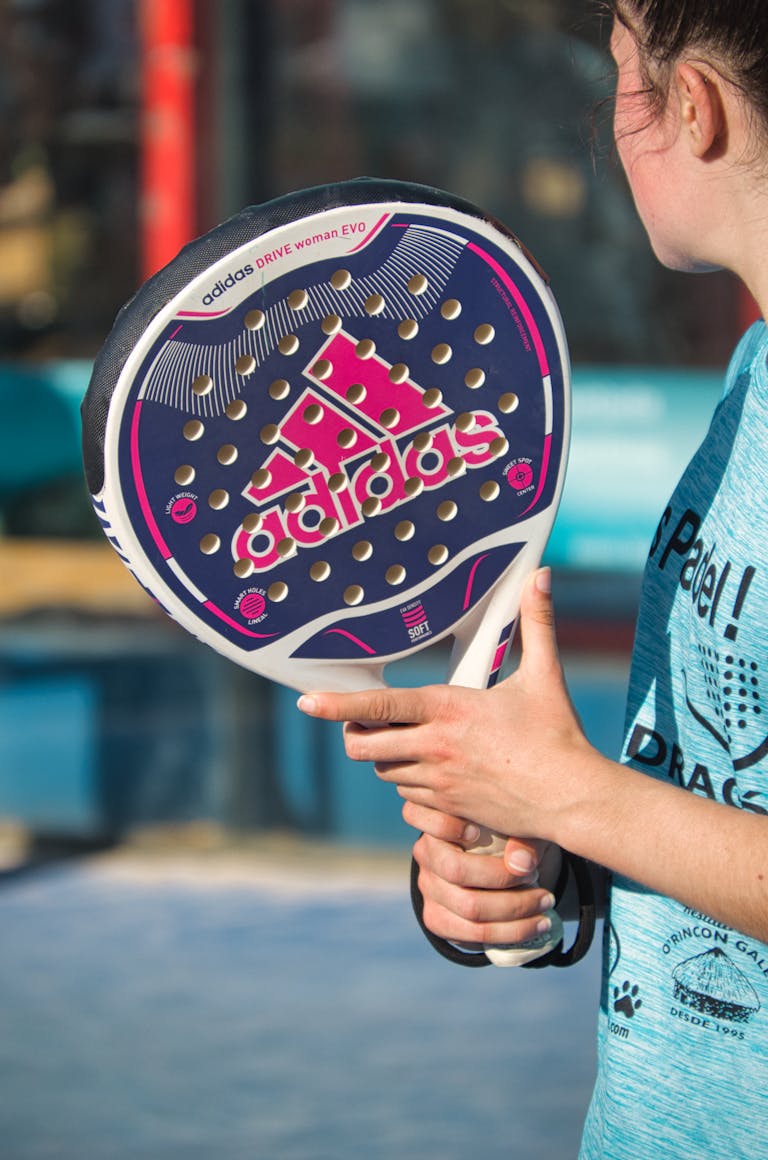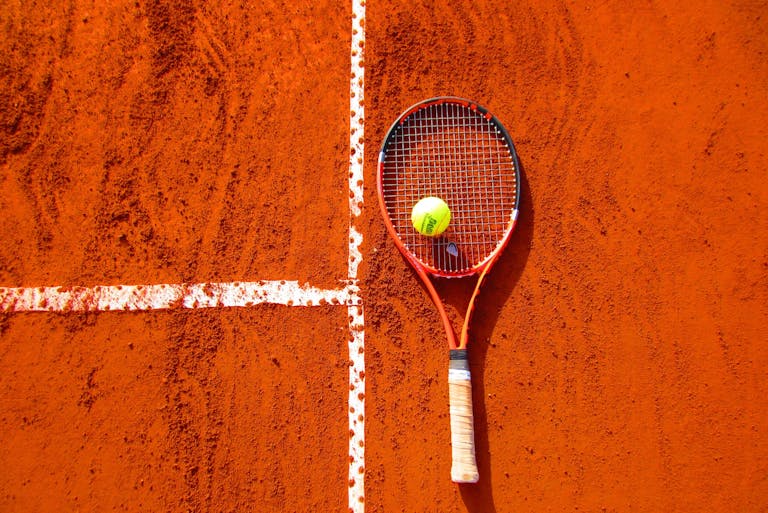Dog sports are fun competitions in which dogs display their agility, swiftness, and cooperation with humans. There are a lot of different kinds, such as agility, flyball and obedience.
While each sport brings its own rules and gear, they all keep dogs fit and mentally sharp. They sign up for enjoyment, for camaraderie, or for local or international competitions.
To find out what sport suits your dog, it’s useful to know what each demands and provides.
What Are Dog Sports?
Dog sports, such as canine freestyle and rally obedience, are structured activities that keep dogs physically and mentally fit. These engaging sports involve a combination of physical skills and mental work, ranging from agility’s running and jumping to scent work’s puzzling. The primary objective is to enhance a dog’s health and maintain their mental freshness, fostering canine athleticism.
As an owner, I’ve loved that dog sports are a wonderful way to connect with my dog and teach her new skills. These competitive dog activities have gained global popularity, attracting individuals from diverse backgrounds and locations. With more people joining clubs and attending events, dog sports have become a significant part of pet culture.
Dog sports are not created equal; they vary in style and emphasize various talents and degrees of difficulty. Here are some main categories of exciting activities.
- Agility: Focuses on speed, balance, and teamwork as dogs run through obstacle courses.
- Obedience: Measures a dog’s ability to follow commands with focus and accuracy.
- Endurance: Tasks like cani-cross or bikejoring, where dogs pull their owner or a cart.
- Scent Work: Dogs use their sense of smell to find items or follow trails.
- Team Sports: Events like flyball or relay races that need teamwork between dogs and people.
- Hunting and Tracking: Activities like coursing, foxhunting, and hound trailing that use a dog’s tracking skills.
- Non-competitive Sports: Activities such as skijoring, which offer fun and exercise without competition.
- Inhumane Practices: Activities like dog fighting and bear baiting are banned in many places for ethical reasons.

The Partnership
Dog sports are based on teamwork. Handler and dog have to learn to act as one. Training together and working toward a goal can solidify the bond between owner and dog.
This cooperation manifests in the way they both learn to trust and read each other. Communication deepens, and mutual victories or defeats at trials bond owner and dog.
Mental Stimulation
The majority of dog sports revolve around problem-solving. Perhaps dogs would have to locate a hidden item by smell, or figure out how to complete an obstacle course.
Brain games such as puzzle toys or tracking stimulate a dog’s intellect and prevent boredom. This is crucial for minimizing the development of destructive habits indoors. The training routines embedded in sports provide dogs with a mental workout.
Physical Fitness
Active dogs are healthy dogs. Dog sports provide your four-legged friend the opportunity to run, jump and move which helps maintain a healthy weight and reduce the chance of obesity.
These sports often involve running, climbing or pulling. This strengthens the dog’s heart, builds muscle and instills stamina. Staying active eliminates medical issues.
The Community
Dog sports tend to unite people, whether at clubs or larger gatherings. Sharing tips and stories with others helps us all learn.
Competitions are where they make new friends, and many become involved as volunteers. Events foster a broader community of support, allowing owners and pups to develop side by side.
Popular Dog Sports
Dog sports have become a huge part of life for dog lovers worldwide. In the past twenty years, additional individuals have become members of dog clubs or registered their dogs in competitions. These sports keep dogs healthy, provide them with mental exercise, and create trust between dog and owner.
All the sports are organized, with their own rules and style, but they all have one thing in common – fun, teamwork, and safe play!
| Sport | Unique Traits | Requirements | Benefits |
|---|---|---|---|
| Agility | Obstacle course | Speed, handler guidance | Coordination, focus |
| Flyball | Relay, ball retrieval | Teamwork, jumping skills | Fitness, agility |
| Dock Diving | Water jumps | Love of water, swimming | Excitement, fun |
| Herding | Livestock management | Instinct, commands | Use of natural skills |
| Scent Work | Scent tracking | Smell, problem solving | Mental exercise |
| Obedience | Command following | Training, discipline | Behavior, discipline |
| Rally | Station-based course | Obedience, teamwork | Interaction, fun |
| Lure Coursing | High-speed chase | Chase drive, speed | Instinct release |
| Canicross | Running with owner | Endurance, leash skills | Fitness, bond |
| Treibball | Ball herding | Herding, communication | Teamwork, thinking |
| Freestyle | Tricks, dance | Choreography, creativity | Self-expression |
| Barn Hunt | Rat search | Scent, agility | Problem solving |
| Disc Dog | Frisbee catching | Jumping, coordination | Agility, teamwork |
| Skijoring | Pulling skier | Power, snow skills | Fitness, teamwork |
| Weight Pulling | Pulling weight | Strength, drive | Power, confidence |
1. Agility
Agility is a high-speed dog sport that has dogs sprint through courses of jumps, tunnels and weave poles. Handlers direct their dog with voice and body cues, so teamwork is essential. This sport sharpens a dog’s reflexes and focus, and builds trust between dog and owner.
Agility embraces all breeds from tiny terriers to larger shepherds and is therefore one of the most inclusive dog sports.
2. Flyball
Flyball is a relay race with hurdles and ball retrieval. It requires teams of 4 dogs, each jumping hurdles in turn to catch a ball and run back. Dogs cooperate, and the sport increases fitness and pace.
All breeds can play, but height could impact hurdle jumping. There’s nothing like the team spirit and competition-fueled adrenaline.
3. Dock Diving
Dock diving is for the water dogs of this world. Dogs sprint off a dock and leap into a pool for longest distance or highest jump. It’s exciting to watch, even more exciting to participate.
Your dogs must be powerful swimmers and love frolicking. While plenty of breeds have a blast dock diving, water hounds tend to excel.
4. Herding
Herding taps into a dog’s instinct to drive livestock, such as sheep or cattle, showcasing the athleticism of various dog breeds. Handlers issue commands, and dogs are taught to direct creatures in prearranged designs, making herding an engaging sport ideal for breeds like border collies.
5. Scent Work
Scent work feeds into a dog’s nose. They sniff out hidden odors and have even been employed in search and rescue. This sport provides dogs a mental workout and is open to any breed.
Dogs adore using their noses, and most owners enjoy seeing their furry friends problem-solve.
6. Obedience
Obedience is completely tied to demonstrating a dog’s obedience. Your dogs have to learn sit, stay, heel and such. Trials are for registered dogs, but any pet can enroll for improved conduct.
Obedience assists owners in establishing respect and trust with their dogs.
7. Rally
Rally combines aspects of agility and obedience. Teams travel from station to station, with separate commands at each. The courses are a blast, and any breed can participate.
Rally is fun and emphasizes the partnership between dog and handler.
8. Lure Coursing
Lure coursing allows dogs to pursue a high-speed lure. Sighthounds adore this type of racing, but other breeds jump in for the excitement as well.
It’s a secure means of dogs accessing their prey drive.
9. Canicross
Canicross is cross country running with the dog attached on a harness to the handler. It fires up fitness for both. Good teamwork and clear cues is what counts.

Huskies and mixes, along with a bunch of other breeds, do extremely well with enough endurance.
10. Treibball
In treibball, dogs push giant exercise balls into a goal, similar to herding sheep. This engaging sport requires teamwork and clever training, allowing various dog breeds to participate as owners often develop their own training methodologies.
11. Freestyle
Canine freestyle is a captivating sport that combines tricks and dance, showcasing the athleticism of various dog breeds. Handlers select music and choreograph routines that are scored for originality and accuracy.
12. Barn Hunt
Barn hunt has your dog sniffing out hidden rats in safe tubes. It challenges nose work and cognition. Lots of breeds give this sport a go, not just terriers.
It’s a way to channel hunting instincts safely.
13. Disc Dog
Disc dog is an engaging sport where dogs leap for discs, showcasing their athleticism. Handler teams earn points for catches, tricks, and teamwork, making it a captivating sport for various dog breeds.
14. Skijoring
Skijoring is an engaging dog sport where dogs pull people on skis, making it a captivating winter activity. Breeds made for pulling, such as huskies, showcase their athleticism and energy.
15. Weight Pulling
Weight pulling has dogs pull carts or sleds weighed down with weights. It needs power and motivation. Even big breeds like malamutes get in on the action.
Dogs strut their strength in a risk-free environment.
Choosing Your Sport
Selecting a dog sport involves considering the big picture—your dog’s history, their preferences, and even your own schedule. Every dog, whether a mixed breed or purebred dog, can participate in various dog sporting events, but matching the sport to both you and your dog enhances the experience.
Breed Instincts
Other breeds are hardwired for specific jobs. Herding breeds such as Border Collies tend to thrive in agility or herding trials as they react quickly and think on their feet. Retrievers may enjoy fetch/splash-based sports like dock diving. Sighthounds like Greyhounds or Whippets often love lure coursing, because the pursuit of moving things is innate for them.
Even mutts can exhibit obvious tendencies that suggest which sports they’ll prefer. Knowing your dog’s breed traits can help you plan better training, since exercises that match their instincts are more likely to keep them focused and happy.
Owners who investigate their dog’s breed—or mix—information tend to have an easier time selecting the appropriate sport. There’s something wonderfully satisfying to handlers in watching their dog light up doing what they were born to do — be it run fast, solve scent puzzles or work alongside humans.
Dog’s Personality
- Slow dogs of a calm and steady nature might gravitate toward slower sports like obedience or rally.
- Outgoing, social dogs tend to love team-based events, like flyball or group agility.
- High-energy dogs require games with a lot of running, like frisbee or agility.
- Shy or sensitive dogs might fare better in low-pressure solo sports, such as scent work.
A dog’s enthusiasm counts for a lot. Dogs who can’t help but go need sports to match that drive, while those who fatigue or bore quickly might do better with plain old games.
Observe your dog’s response to each new activity. Their body language or eagerness to participate can assist you discover what they love most. Selecting a sport that complements your dog’s personality makes everything easier and more enjoyable.
Owner’s Lifestyle
It’s your own daily life that counts. If you’re swamped with work and family, a sport like nose work or trick training, where sessions are short and flexible, can slot in nicely. For owners who enjoy the outdoors or being active, running- or hiking-based sports like canicross or agility may be a better fit.
Consider how much time and energy you can dedicate. A lot of dog owners actually try more than one sport, flipping things up based on their own schedule or their dog’s shifting interests. Balancing sport with other obligations keeps your training fun, not burdensome.
Physical Limits
Always inspect your dog’s physique and age prior to starting. Puppies or senior dogs require reduced, easier sessions. Certain sports aren’t safe for girls in season or injured dogs.
Eases in. It protects your dog and decreases the danger of injury. Ask your vet if you’re not sure about your dog’s fitness.
The Training Journey
A dog’s journey in sports begins with developing foundational skills and expands through consistent training, collaboration, and a positive attitude. All puppies and adult dogs can start on this path. When you set small, clear goals and concentrate training in short bursts, it helps both you and your dog actually notice progress from one month to the next.
Mindset and learning how to deal with both highs and lows have a huge impact on competition preparation.
Foundation Skills
Foundation skills are the foundation of every dog sport. Dogs should know basic things, like sit, stay and come. These are not tricks. They are the safety and teamwork commandments.
Exercise and patience with these fundamentals mold how effectively a dog masters more difficult abilities down the road. Training these skills in various locations, with novel people and noises present, keeps dogs from getting too amped to listen during a walk.
Being around other dogs and people, even if just on occasional walks or at crowded parks, can make all the difference. Dogs that learn to handle change and new things tend to be less stressed in competition.
Positive Reinforcement
Dogs respond to positive reinforcement. When a dog receives a treat or a nice comment following the correct action, it desires to repeat the behavior. This technique is known as positive reinforcement. Works for all ages and breeds.
A good training spot is low-stress and has plenty of opportunities to gain loot. Disregarding error and rewarding good decision-making enables dogs learn more quickly.
Eventually, this makes training flow nicer and assists the dog in trusting its owner. Reward trained dogs also hold on to their skills longer and are more likely to be hungry and receptive to learn additional things.
Professional Guidance
Training side — Working with a trainer who knows dog sports can assist. These coaches recognize issues quickly and offer advice on how to correct them. They can instruct handlers on how to interpret their dog’s body language and provide sport-appropriate feedback.
Signing up for group lessons or workshops allows dogs and handlers to experiment with new things together. It provides a safe space to train in front of other squads.
Good training is essential for both safety and success in agility, rally, or obedience. Dogs can master intricate moves, but only if the dog and handler both know what to do and how to work together.
Patience and Consistency
Training takes time, especially in various dog sports like rally obedience or canine freestyle. Keep your cool and push on, as small, steady steps add up to big changes for dogs of any age or breed.
Beyond The Competition
Dog sports have expanded rapidly, sculpted by media and social channels. These sports extend beyond the competition. They keep dogs and dog owners fit and instill trust and community.
There are tons of types of dog sports out there today, from agility and flyball to herding and tracking. You don’t need a field or crowd to reap the rewards. Easy games and backyard joy can make a true difference.
Everyday Games
Easy games of fetch, tug or hide and seek are ideal for a daily romp. They don’t require a lot of room or equipment. Owners can utilize balls, soft toys or even old towels!
Stash snacks indoors or out and have your dog come and get ‘em! Mix up the hiding places to keep it interesting! Hands-on play delivers more than smiles. It keeps a dog’s mind sharp and his body strong.
Games increase reflexes, assist in weight management and reduce boredom. They assist dogs to utilize their instinctual talents, such as sniffing a toy or pursuit of a moving object. For instance, scent games are perfect for hounds and herding games complement shepherd breeds.
Incorporating games into daily life creates trust and a strong connection between dog and owner. Dogs flourish on attention. Even five to ten minutes a day makes a difference.

Testing new games can catch both dog and owner off guard. Mix up the toys, switch the rules, make up your own games. The joy is in having your dog so enthusiastic.
Backyard Activities
A little yard can become a play land with a few modifications. You can make easy agility courses for your dogs using cones, boxes or sticks. Jump, tunnels, and zigzag paths can all be created with household objects.
Obstacle challenges keep dogs alert and active. Outdoors play is essential for a dog’s well-being. Sprinting, leaping and ducking between props engage different muscles.
These type activities help burn energy and keep joints loose. They additionally provide dogs a risk-free means of drilling abilities they utilize in sports, such as speed and focus. Owners can utilize what they’ve got.
Ancient chairs are tunnels, broomsticks turn into jumps and laundry baskets goals. The idea is to utilize space and instruments inventively. Comfort in the yard — together.
Dogs secure, and owners can observe them up close. It’s an opportunity to create memories, teach new moves, and soak up one another’s presence.
List of Outdoor Games and Activities
- Fetch with balls or frisbees
- Tug-of-war using rope toys
- Hide-and-seek with treats
- Mini-agility with cones or boxes
- Water games with shallow pools
- Scent tracking around the garden
- Relay races with family or friends
- Herding with lightweight balls
- Obstacle maze using furniture
- Simple recall games
Safety First
Dog sports are not without risk, so forethought is paramount. Safety counts at every step, from training to competitions. The proper gear, routine visits to the vet and monitoring each dog’s temperament and condition are all essential. Just as handlers do, dogs need to feel safe and secure.
Below is a quick reference for safety tips and recommendations:
| Safety Precaution | Recommendation |
|---|---|
| Warm-up before activity | 5–10 minutes of light play or walking |
| Use proper gear | Fit harnesses, leashes, sport-specific tools |
| Monitor for fatigue | Watch for heavy panting, limping, or drooling |
| Leashes during training | Always use in new or busy areas |
| Regular vet checks | Schedule at least twice a year |
| Inspect equipment | Check for cracks, sharp edges, or loose parts |
| Positive reinforcement | Encourage calm, reward-based training |
| Recognize stress signals | Pause if dog seems anxious or distracted |
| Name recognition | Practice recall and response to commands |
Injury Prevention
A brief warm-up loosens joints and muscles. Five to 10 minutes of vigorous walking or light play is great for most breeds. Without this step, dogs are more susceptible to strains or sprains.
Intensity must rise slowly. Sudden training, running or jumping distance jumps can injure them, particularly puppies or geriatrics. Owners should be mindful of their dog’s energy, gait, and respiration. If something feels wrong, it’s safer to hesitate or pause.
Routine vet visits assist detect early symptoms of overuse or injury. Vets can provide guidance specific to your dog’s age, sport and health. This advice is crucial for both new and seasoned handlers.
Health Checks
Regular checkups catch silent issues. Early detection can catch problems before they’re serious. Active dogs are susceptible to joint or heart problems, so these checks are more than a formality.
Fitness levels vary. Owners need to monitor weight, muscle tone and stamina. Agility and herding dogs benefit from staying lean and nimble. Vaccinations and preventive medicine are important because active dogs encounter greater risks.
Be on the lookout for rapid weight fluctuations. Overweight dogs are at higher risk for injury. Underweight dogs might not have the sportiness.
Equipment Safety
Quality gear saves canine lives. Utilize sport specific equipment—such as canicross finess or robust balls. Inspect all equipment for damage prior to use.
Right fit counts. A loose or tight harness can chafe or injure. Opt for comfortable, non-restrictive gear. Play by the rules and safety guidelines of each sport for dog and handler’s safety.
Prioritizing Well-Being
Short, upbeat training sessions in various dog sports reduce stress while ensuring safety remains the main goal.
Final Thought
Dog sports provide dogs and their humans an outlet to be active, to work and to connect. Every game, from flyball sprints to tight agility turns, provides fresh paths to development and play. Dogs pick up new skills, burn off energy and keep their minds sharp. You meet like-minded dog-and-sport lovers.
Safety still remains paramount, so equipment and playing surface must be appropriate for each unit. Ready to begin? Find a local pack or club that suits your speed. Discover a dog sport that resonates with you both. Step into the void, make an appearance and find out what you can both accomplish. The great stuff begins with that initial field step.
Frequently Asked Questions
What are dog sports?
Dog sports, including canine freestyle and rally obedience, are activities in which dogs and handlers participate together to compete or demonstrate specific skills, enhancing a dog’s physical and mental well-being.
Which dog breeds are best for dog sports?
All sorts of dog breeds can thrive in various dog sports. Herding, working, and sporting breeds often dominate, but any healthy dog with the right training can compete.
Are dog sports safe for all dogs?
Not all dog sports, such as canine freestyle or rally obedience, are appropriate for all dogs. Consider your dog’s age, size, and health before starting any competitive dog activity.
How do I start training my dog for sports?
Start with good old obedience training. Then locate a local club or certified instructor for your particular dog sport to take lessons.
What equipment is needed for dog sports?
Sport-specific gear includes essential dog sport items like collars, leashes, harnesses, and equipment such as agility tunnels or flyball boxes for canine sports.
Can older dogs participate in dog sports?
Yes, senior dogs can enroll in low-impact canine sports like rally obedience or scent work, ensuring their participation promotes healthy dog activity. Of course, check with your vet before trying new activities.
What are the benefits of dog sports?
Dog sports, such as canine freestyle and rally obedience, create great dog and people bonds while enhancing a dog’s fitness, focus, and confidence.






